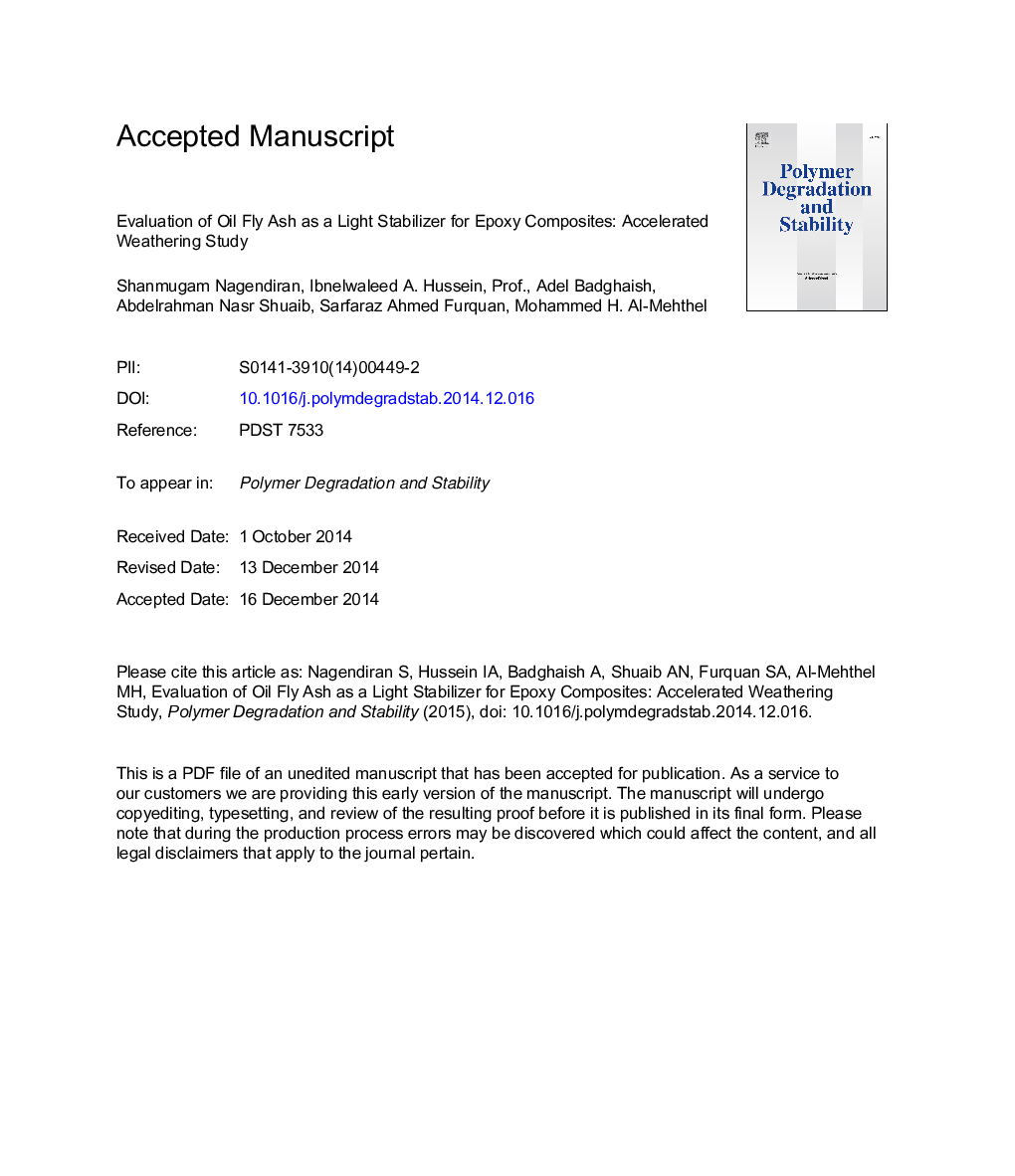| Article ID | Journal | Published Year | Pages | File Type |
|---|---|---|---|---|
| 5201523 | Polymer Degradation and Stability | 2015 | 47 Pages |
Abstract
Residual oil fly ash (OFA) was used in epoxy pipe formulations for total or partial replacement of commercial light stabilizer i.e. Hostavin® N24 without influencing the thermal or mechanical properties of the pipes. The optimum amount of OFA was identified as 4Â wt% in a previous study and used here to prepare a composite for complete replacement of commercial light stabilizer. For this purpose, the optimum amount of OFA filled epoxy composite, based on bisphenol-A liquid epoxy, is prepared via in-situ co-polymerization with isophorone diamine as curing agent in the presence of 4Â wt% of OFA as filler. The epoxy composites comprising 0.5Â wt% Hostavin® N24 (control) and a mixture of 2Â wt% OFA and 0.25Â wt% Hostavin® N24 were also prepared for comparison with 4Â wt% OFA sample to investigate the possibility of complete or partial replacement of commercial light stabilizer in epoxy pipe formulations. The developed epoxy composites were subjected to 0.5-6 months of accelerated weathering. At each interval, the effects of exposure on the composites were characterized by morphology, FT-IR, mechanical and thermal properties. The results of characterizations reveal that the 4Â wt% OFA can completely replace the commercial light stabilizer in epoxy composites for industrial pipes formulations. This replacement will not have any significant impact on the thermal or mechanical properties of the composites. The significance of the effect on mechanical properties was established by using statistical analysis tools.
Related Topics
Physical Sciences and Engineering
Chemistry
Organic Chemistry
Authors
Nagendiran Shanmugam, Ibnelwaleed A. Hussein, Adel Badghaish, Abdelrahman Nasr Shuaib, Sarfaraz Ahmed Furquan, Mohammed H. Al-Mehthel,
